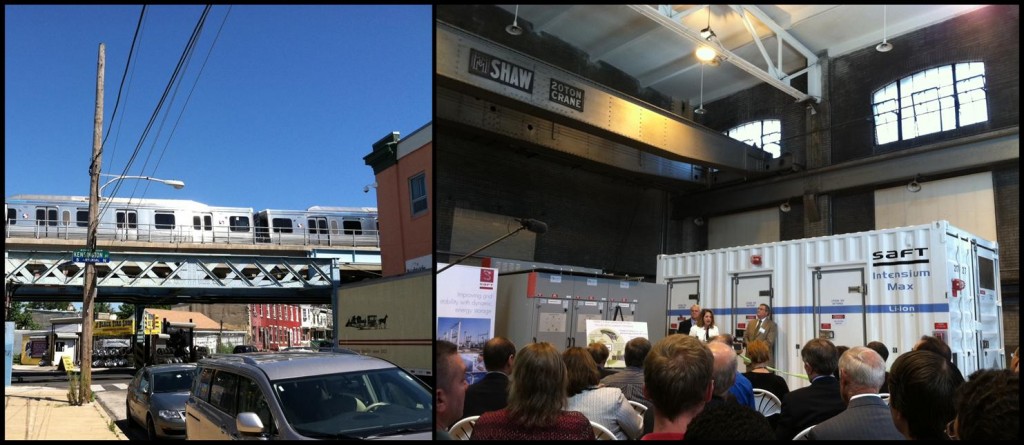Yesterday, the nation’s sixth-largest transit agency, the Southeastern Pennsylvania Transportation Authority (SEPTA) demonstrated that it is possible to reduce energy consumption, lower harmful emissions, and increase operating revenue all with a single project.
At a ribbon-cutting event held in the Letterly Substation along Philadelphia’s busiest transit line, SEPTA representatives unveiled the “Wayside Energy Storage Project,” a brand new system that captures and stores excess energy produced when trains brake while approaching a station. The stored energy is then used either to provide power for accelerating trains or is sold back into the grid. The project was developed with an initial grant of $900,000 from the Pennsylvania Energy Development Authority, in partnership with local Philadelphia “smart-energy” company Viridity Energy.

SEPTA noted that this system will provide back-up power in the event of an emergency and should result in an overall 10% reduction in energy usage—preventing more than 1,000 tons of carbon dioxide from being released into the air each year. The economic benefits are also substantial. Factoring in both its supply savings and new revenue from energy sales, SEPTA expects a new annual economic benefit of between $170,000 and $440,000 from the storage system. With substantial rolling stock needs to be met in coming years, SEPTA must harness every revenue source that it can.
In an era when transit systems across the nation are cash-strapped, and hard-hit transit riders are calling for capital improvements and the restoration of service cuts brought on by inadequate funding, this project offers an innovative model to reduce energy consumption and increase revenues. It remains to be seen if these results can be scaled up, but SEPTA plans to expand the project to other sections of the Market-Frankford Line, and Viridity sees an opportunity for this technology to be replicated in transit systems throughout the US.
